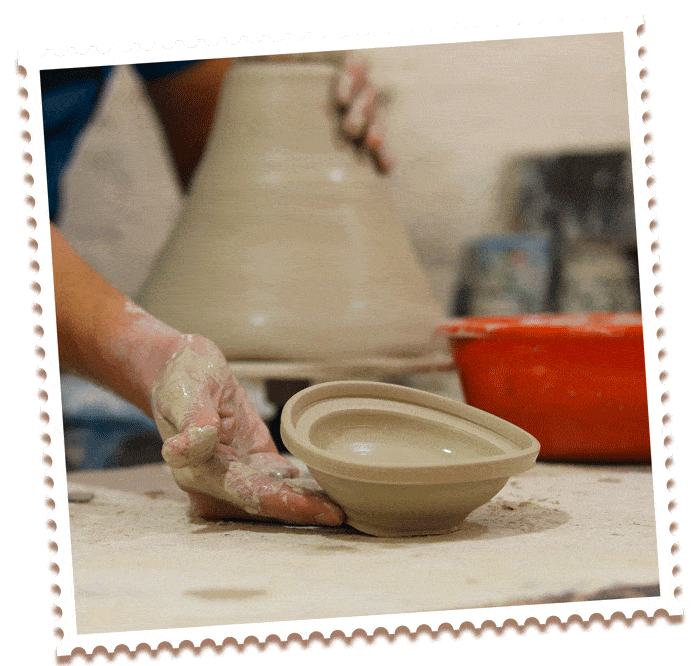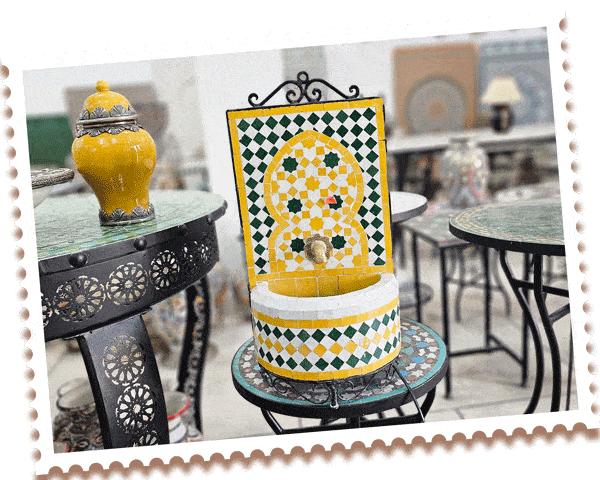
The Rich History of Pottery and Mosaic in Morocco
Morocco is a land of intricate artistry, where color, tradition, and craftsmanship come together in timeless harmony. Among its most celebrated art forms are pottery and zellige mosaic—two crafts that tell the story of Morocco’s cultural identity, historical influences, and artistic ingenuity. These traditions are beautiful to behold and deeply woven into Moroccan society’s daily life and architecture.
The Origins of Moroccan Pottery
Pottery in Morocco dates back thousands of years, tracing its roots to the Berber (Amazigh) civilizations that occupied North Africa long before the arrival of Arabs or Islam. These early communities created functional ceramics for storage, cooking, and ritual use, often using rudimentary hand-building techniques and open fires for baking their creations.
With the arrival of Phoenicians, Carthaginians, and Romans, Moroccan pottery evolved significantly. The Romans, in particular, introduced the potter’s wheel, new glazing techniques, and more refined forms. Yet even with outside influence, Moroccan pottery maintained its unique identity—characterized by earthy tones, geometric patterns, and symbolism tied to nature, fertility, and spirituality.

The Islamic Golden Age and Artistic Flourishing
The 7th century marked a major turning point with the arrival of Islamic culture in Morocco. Alongside religion came a surge in architectural and decorative arts, spurred by the Islamic emphasis on non-figurative art—leading to a rise in geometric patterns, calligraphy, and arabesques.
It was during the Almoravid and Almohad dynasties (11th–13th centuries) that Moroccan artisans began incorporating more elaborate forms of decoration into both pottery and architecture. The development of glazed ceramics—using lead-based or alkaline glazes—added vibrant greens, blues, and whites to the artist’s palette.
By the Marinid dynasty (13th–15th centuries), Moroccan pottery and tilework reached a new level of sophistication, with centers of production flourishing in Fez, Meknes, Safi, and Marrakech.
Discover the Art of Moroccan Pottery in Fez
Step into the world of traditional Moroccan craftsmanship with a hands-on pottery workshop in the heart of Fez. Guided by master artisans, you’ll learn age-old techniques, shape your own clay creation, and uncover the secrets behind Fez’s iconic blue ceramics.
👉 Book your workshop now and become part of a centuries-old tradition!
The Birth and Brilliance of Zellige Mosaic
Zellige (also spelled zellij or zillij) is the traditional Moroccan mosaic tilework made from individually chiseled pieces of glazed terracotta. This art form is a cousin to Islamic tilework found across the Arab world, but Morocco developed its own distinct style.
Zellige emerged in the 10th century, but it was under the Marinids that it blossomed into a true architectural art form. Using small, hand-cut pieces arranged into complex geometric shapes, artisans created intricate mosaics that adorned mosques, palaces, fountains, patios, and madrasas.
What makes Moroccan zellige unique is the mathematical precision and symbolic depth of the patterns. The artisans, known as maâlems, use shapes like stars, crosses, and polygons—often based on Islamic geometry and sacred mathematics—to convey harmony and divine order.

Cultural Significance
Pottery and mosaic are more than just decorative arts in Morocco—they are expressions of identity, spirituality, and social connection. A ceramic tagine is not just a cooking vessel but a symbol of Moroccan hospitality. A zellige-covered fountain is not merely ornamental—it represents purity, reflection, and the beauty of geometry in the service of the divine.
Moreover, these crafts are often family traditions, with techniques passed down from master to apprentice over centuries. Many artisans still work in the same small workshops, shaping clay by hand and cutting tiles with precision tools, keeping the ancestral methods alive.
Regional Styles and Techniques
Each region of Morocco has its own style when it comes to pottery:
-
Fez is famous for its white clay and deep cobalt blue designs. The Fez blue is iconic and often combined with floral and geometric motifs.
-
Safi, located on the Atlantic coast, is the center of Moroccan ceramics today. Its pottery features multicolored glazes and bold, contemporary interpretations of traditional patterns.
-
Tamegroute, in the south near the edge of the Sahara, is known for its unique green-glazed pottery, made with ancient techniques passed down through generations.
-
Meknes and Marrakech also have rich pottery traditions, often focused on earthenware and utilitarian items with simple yet elegant designs.
Modern Revival and Global Recognition
Today, Moroccan pottery and mosaic enjoy global admiration. From luxury homes to modern restaurants and boutique hotels around the world, Moroccan tiles and ceramics are celebrated for their charm and authenticity.
In recent years, there has been a resurgence of interest in traditional crafts among young Moroccan designers and international artisans. Many are blending traditional techniques with modern aesthetics, creating new opportunities for cultural exchange and sustainable development.
Moroccan zellige and pottery continue to evolve, but they remain rooted in their centuries-old heritage—a living legacy of creativity, resilience, and beauty.
Moroccan Pottery and Mosaic
Whether you’re walking through the winding medinas of Fez, exploring the kasbahs of the south, or browsing a modern design shop in Casablanca, you’re bound to encounter the breathtaking artistry of Moroccan pottery and mosaic. These timeless crafts are more than artifacts, they are living stories, shaped by the hands and hearts of generations.
If you’re ever in Morocco, don’t miss the chance to visit a ceramic workshop or tile studio. Watch the process unfold. Feel the clay. Hear the rhythm of the hammer shaping the tiles. It’s an experience that connects the past and present—one beautiful piece at a time.
